Under the Lens: A. Lange & Söhne 1815 Rattrapante Perpetual Calendar “Salmon”
Under the Lens: A. Lange & Söhne 1815 Rattrapante Perpetual Calendar “Salmon”
While the 1815 Rattrapante Perpetual Calendar was originally launched a decade ago, it has only seen a few iterations, which aligns with Lange’s typical restrained design philosophy. These iterations are mostly minimalist, such as pink gold or platinum versions with silver dials. An exception is the ultra-luxurious Handwerkskunst edition, which sports a dark blue champlévé enamel dial adorned with stars engraved in relief.
Considering the limited yet distinctly varied dial options at hand, the addition of the “salmon” dial to the 1815 Rattrapante Perpetual Calendar is noteworthy, even though it’s an update on style rather than mechanics. The “salmon” dial, or more precisely, the “pink gold” dial – the dial is made from pink gold to give it a natural rosy hue – bridges the gap between the plain silver and the elaborate enamel versions, offering something that’s appealing yet modest.
With a split-second chronograph, a perpetual calendar, and a “salmon” dial, the latest offering appears to be one of Lange’s most appealing chronographs. Yet, does it truly live up to this impression?
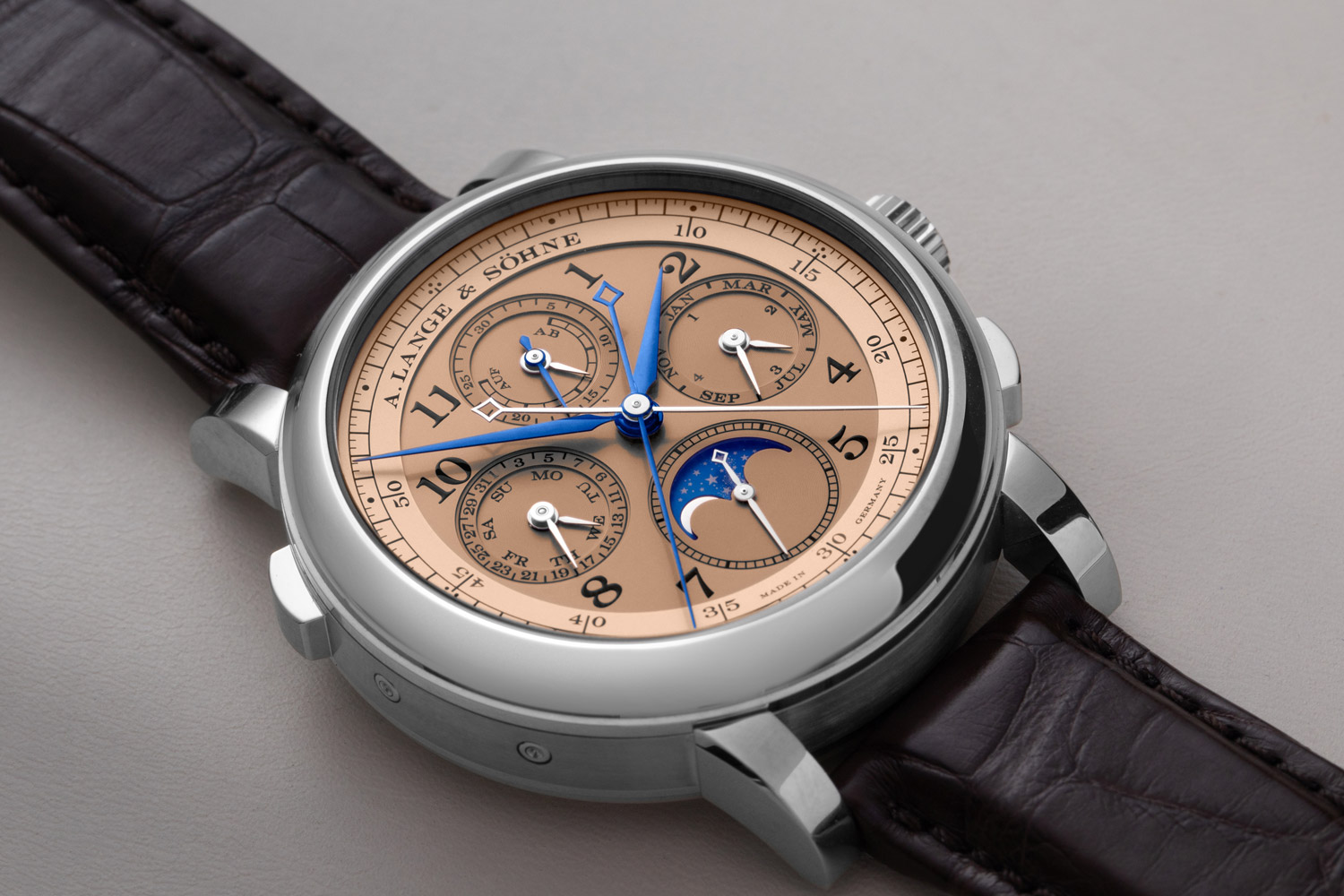
A classy yet lively blend of rose and blue
Solid gold salmon
Upon closer examination of the dial arrangement, a distinct sense of practicality becomes evident. Three of the four sub-dials feature dual hands, effectively displaying two sets of information. The co-axial hand setup on these sub-dials reduces the need for extra counters, resulting in a tidy layout within four symmetrical spaces. This stands in contrast to intricate watches with scattered indicators, arriving at a more serious aesthetic. In addition, the Lange 1815’s the two chronograph seconds hands stand out distinctly in contrasting blue and silver colours.
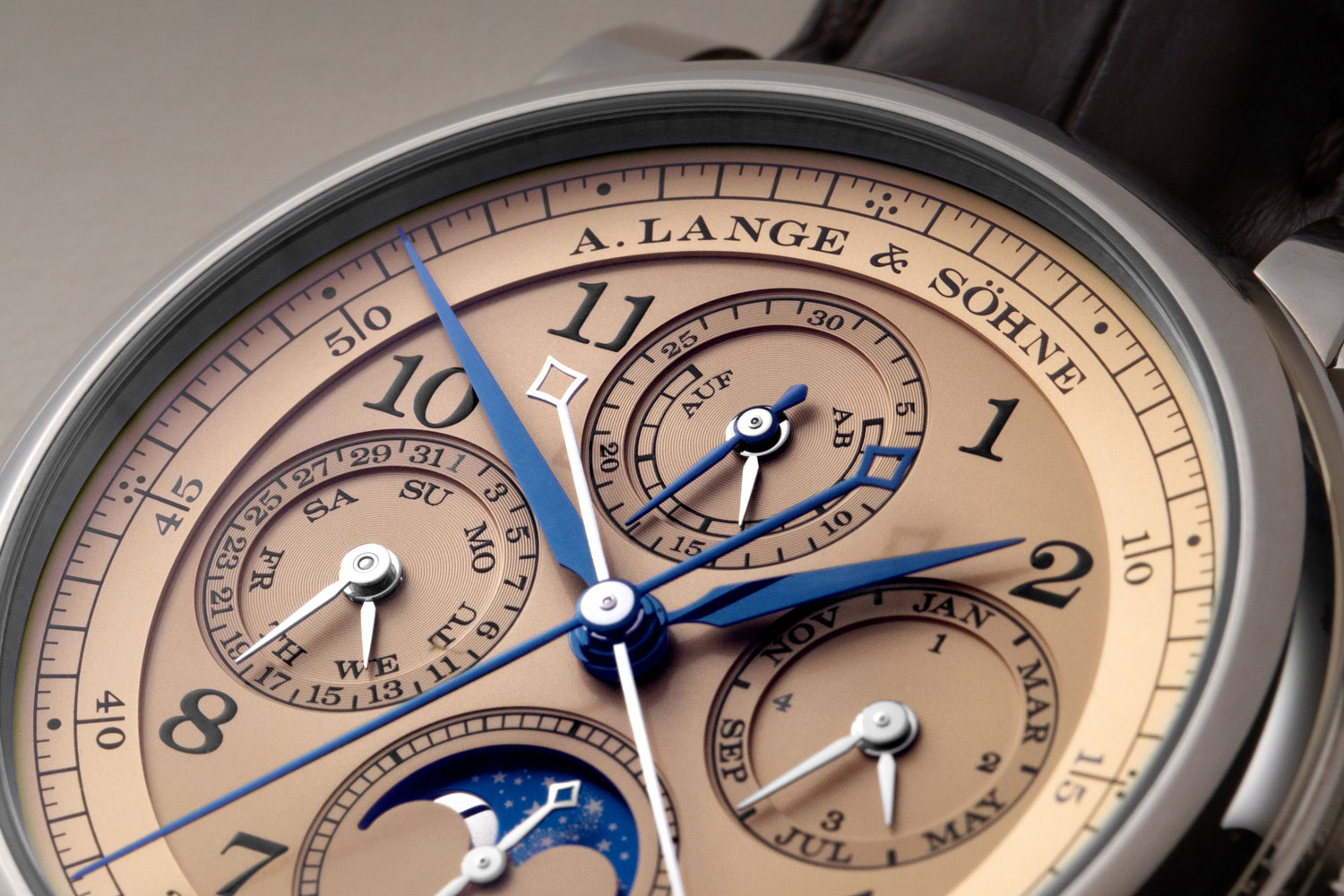
Two colors for two chronograph seconds
Notably, both the main dial and sub-dial have blue markers at the quarters. These blue markers, along with the blue hands, complement the salmon color beautifully, creating a contrasting and vibrant combination. The addition of blue on the dial underscores Lange’s keen attention to detail, as it represents a deliberate change from earlier versions that featured red markers. Red markers could have made the dial look overly warm and affected, whereas the choice of blue adds a refreshing coolness to the rosy dial.
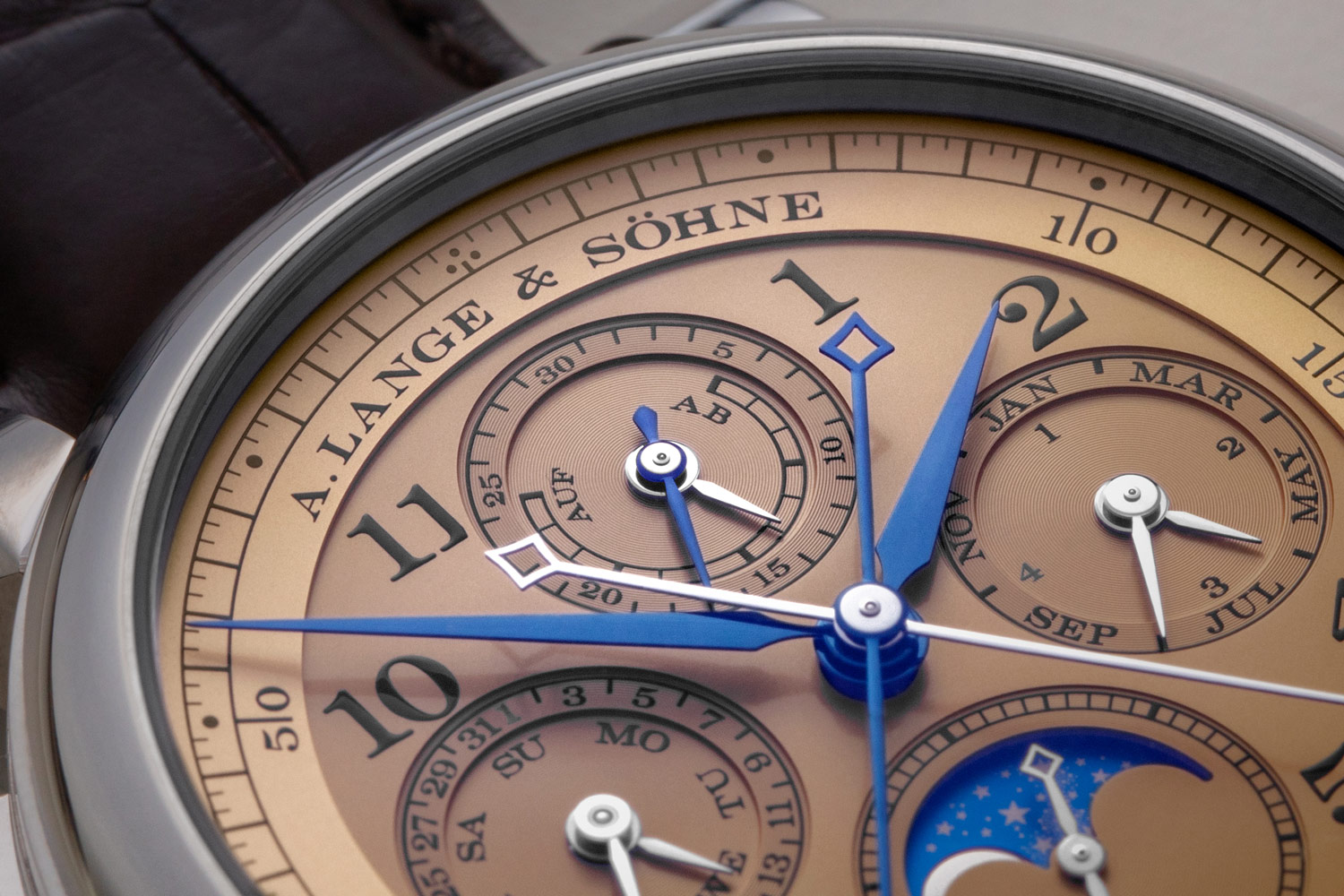
A romantic moonphase with starry background
A moderately sized case
At 41.9 mm in width, it is substantial yet not excessively large, both within Lange’s lineup and in a broader context. Numerous contemporary automatic chronographs share a similar size or even larger dimensions. Consider the Breitling Navitimer, Omega Speedmaster, and Tudor Black Bay Chronograph, for instance.
Similarly, the thickness is quite moderate for a Lange, measuring 14.7 mm. In comparison, the Double Split, which boasts an additional split minute hand but lacks the perpetual calendar, is even thicker at 15.3 mm (more on the reasons later).
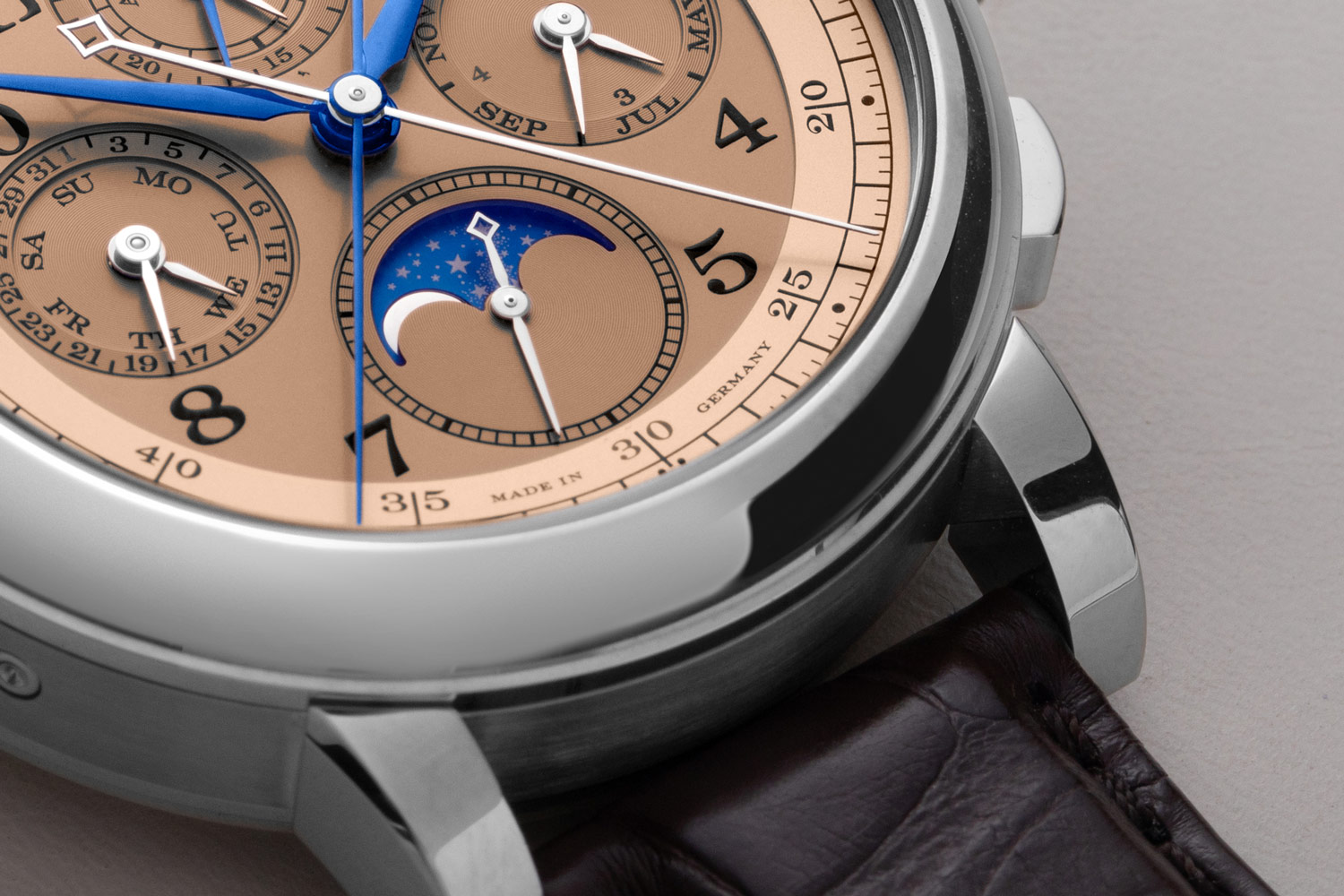
Does the movement truly meet Lange’s quality standards?
For those eagerly seeking a conclusion, yes, the L101.1 is indeed a commendable chronograph movement executed at an extremely high level. It’s evident that thought has been invested in the movement’s design, resulting in an exquisite and intricate look. This is attributed not only to the design of the chronograph levers, which has an old-school and elaborate essence, but also to the attention to decoration.
In terms of the chronograph’s construction, the movement exhibits multiple layers of complexity. This gives the movement an uncommon depth of visual, a characteristic not often encountered even in high-end chronographs from renowned brands. Here is where Lange distinguishes itself.
Lange also shines when it comes to decoration, ranking among the top brands in this regard. This becomes evident through three elements. For instance, all chronograph levels are fashioned from steel and possess a brushed upper surface, flanked by polished bevels. This brushed finish gives the watch an elegant and understated demeanour that comes alive with a subtle gleam at the bevel’s edge. The same level of detail extends to the movement plate, adorned with Glashütte stripes (akin to Geneva stripes), complemented by delicate polished bevels that enhance its shape gracefully.
Additionally, a standout facet of Lange’s movement finishing is the hand-engraved balance cock. While manual craftsmanship doesn’t automatically guarantee superior quality, the L101.1 demonstrates intricate floral engravings. This adds a touch of romanticism to the robust movement, which inherently radiates the solemn precision of German engineering.
Lastly, the choice of colours enriches the movement’s palette. For instance, the use of blued screws and gold chatons injects bursts of colour into the assembly of components. Incorporating German silver for the movement bridges also imparts an added warmth to the movement’s aesthetic.
However, in the spirit of thorough analysis, it’s worth noting that while the watch’s execution attains an incredibly high standard, there are a few elements we would like to discuss further. The exploration of the reasons behind this evaluation will be approached from three perspectives: function, execution, and architecture.
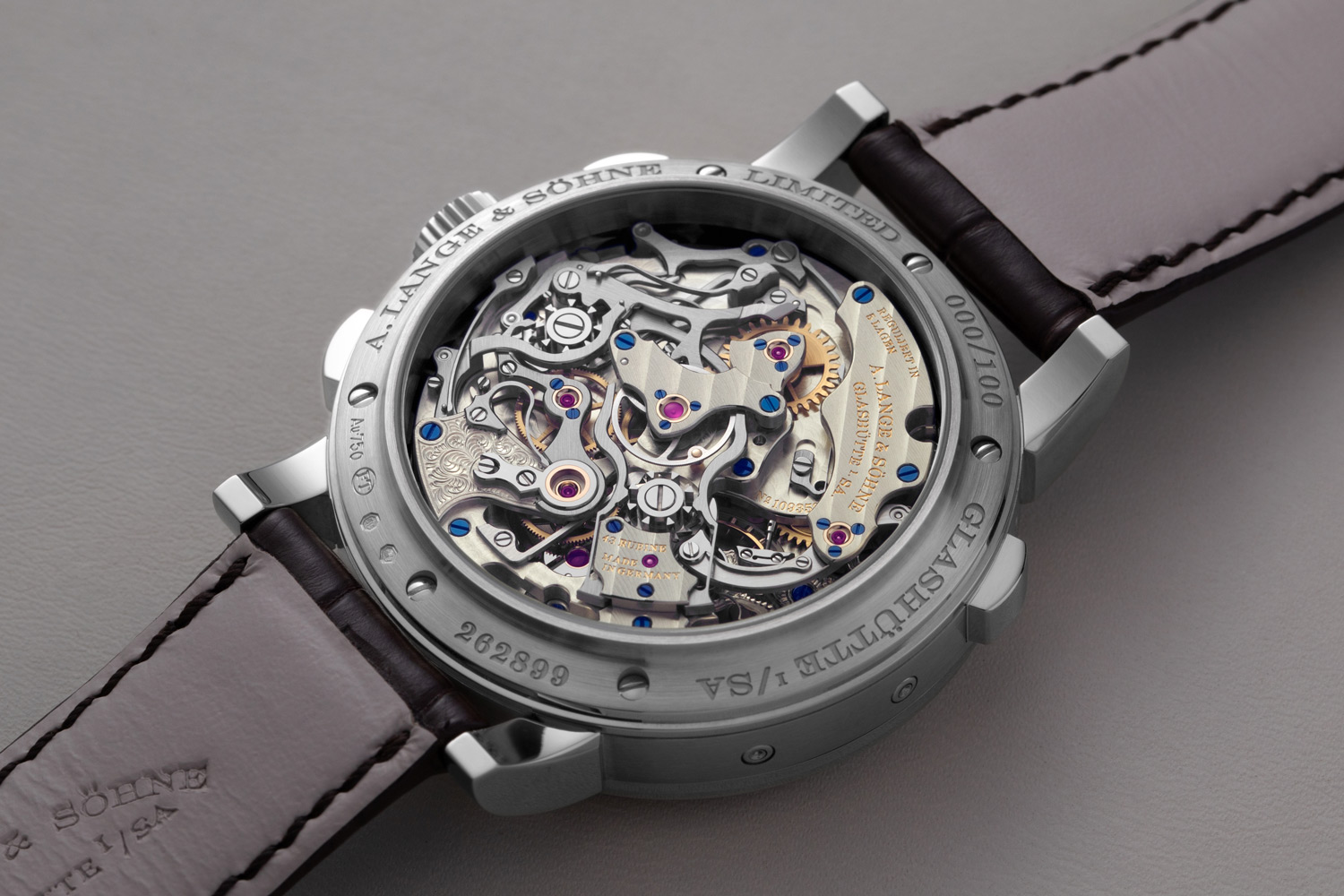
The L101.1
Regarding its execution, the construction of the split-second mechanism has been slightly simplified. In traditional split-second chronographs, you would typically find an isolator – a system designed to prevent the reset lever attached to the split-seconds wheel from “dragging” over the heart cam of the regular chronograph seconds wheel. This safeguard is crucial for preserving the accuracy of elapsed time measurement and the overall watch performance. Not featured in this watch, this system is usually identified by an additional wheel positioned atop the split-second wheel at the very heart of the movement.
To compensate for the absence of an isolator, Lange uses a ruby roller to prevent dragging. Unlike an isolator positioned above the split-seconds wheel, the ruby roller is placed beneath it, reducing overall height. The ruby roller is tucked at the tip of the split-seconds reset lever, which is in contact with a heart cam. The ruby roller thus reduces friction when the split-seconds chronograph is in operation, thereby reducing drag. More on how the lever and cam work together for the split-second reset will be explained later.

The resetting or catching up of the split-seconds hand is facilitated by the reset lever, which will snap back to the lowest point of the heart cam attached to the chronograph tube arbour and align the split-seconds wheel with the regular chronograph seconds. Importantly, the lever requires force to work, traditionally provided by a tension spring in the form of a curved blade spring.
A curved spring is an elongated piece of metal with a certain thickness to provide it with strength, and it is the traditional manner in which to make a spring. In place of a curved spring, the 1815 uses a coil spring, which is simpler to manufacture and performs its task perfectly, but arguably diminishes in aesthetics. Point to note, for a watch to bear the Geneva Seal (which is not a concern for this German watch), it cannot have a coil spring.
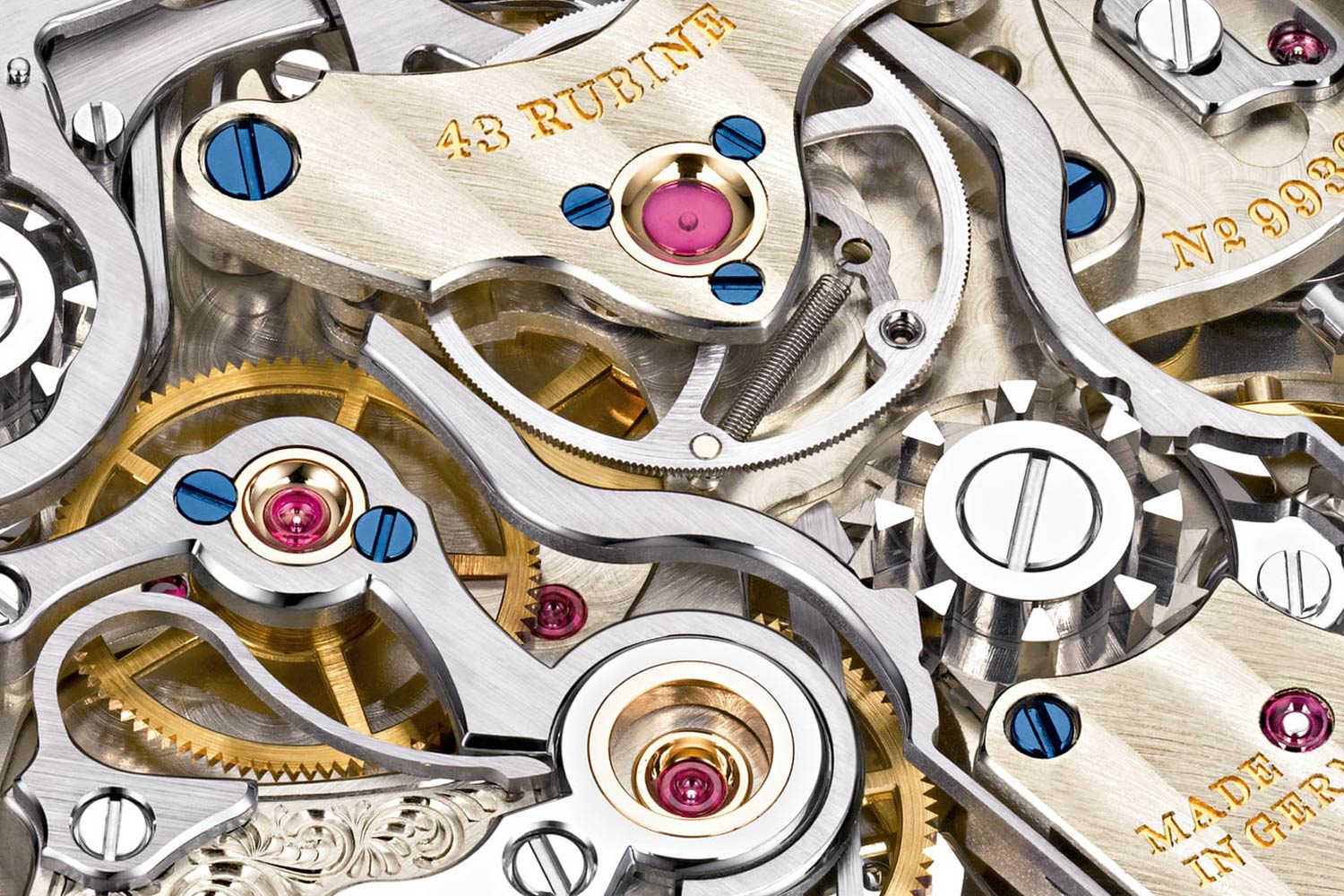
Notice the coil spring just under the split-seconds wheel
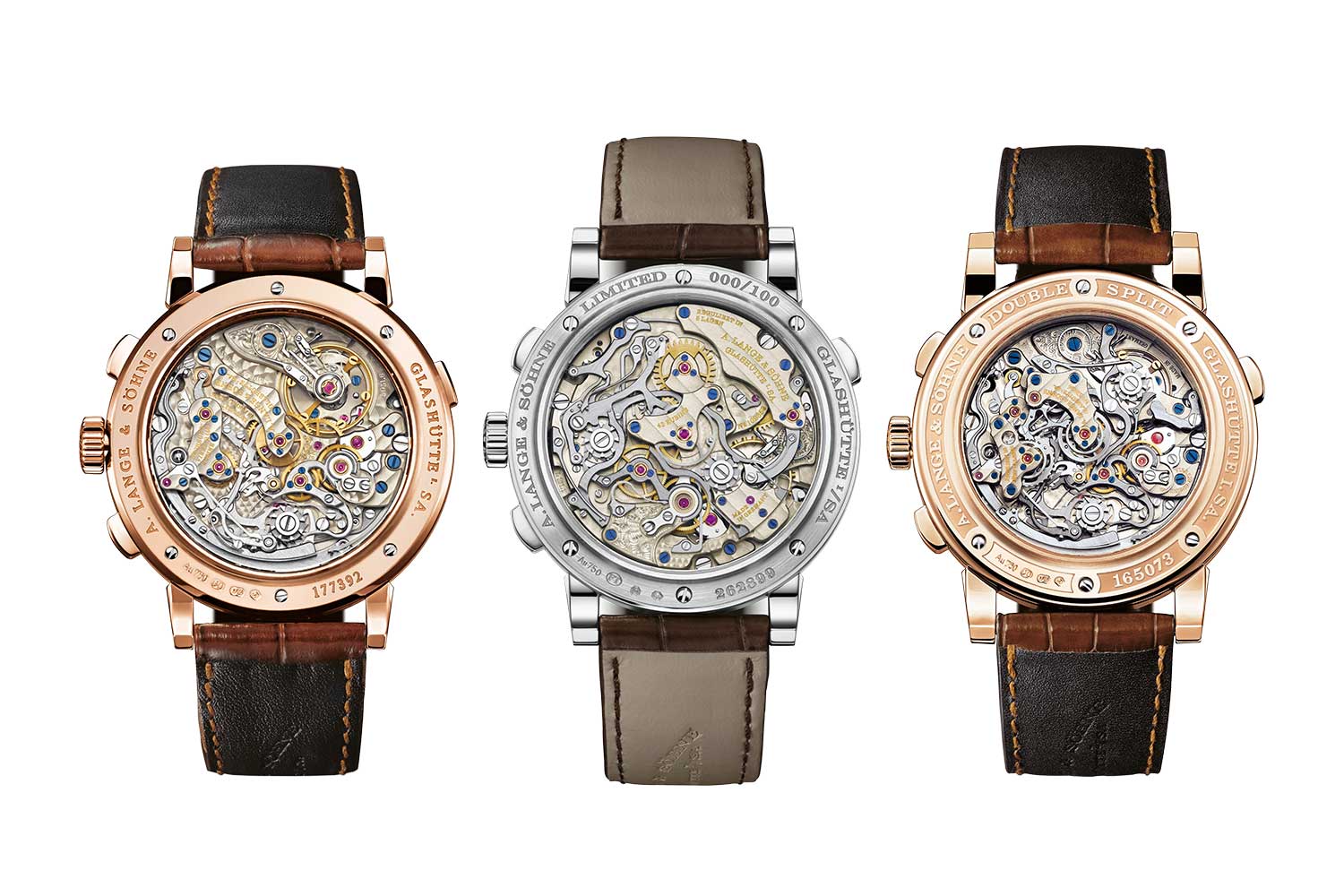
From left to right: the Datograph, 1815 Rattrapante Perpetual Calendar, and the Double Split
It’s important to remember that Lange is no longer relatively “underpriced” (being more reasonably priced than competitors while offering superior execution). The latest 1815 comes with a price tag of USD 319,000, a significant increase from its previous cost of around USD 240,000 just a few years ago.
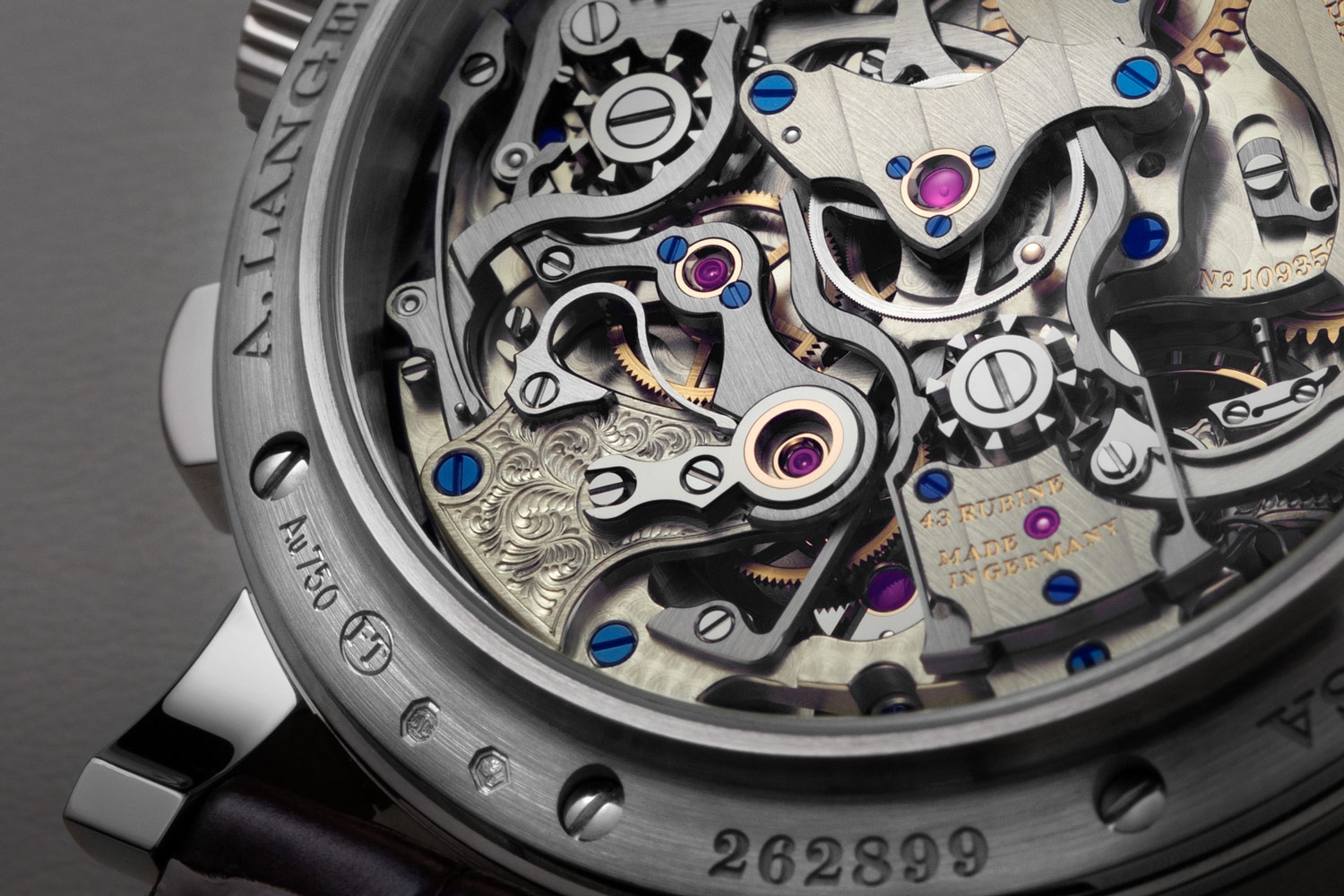
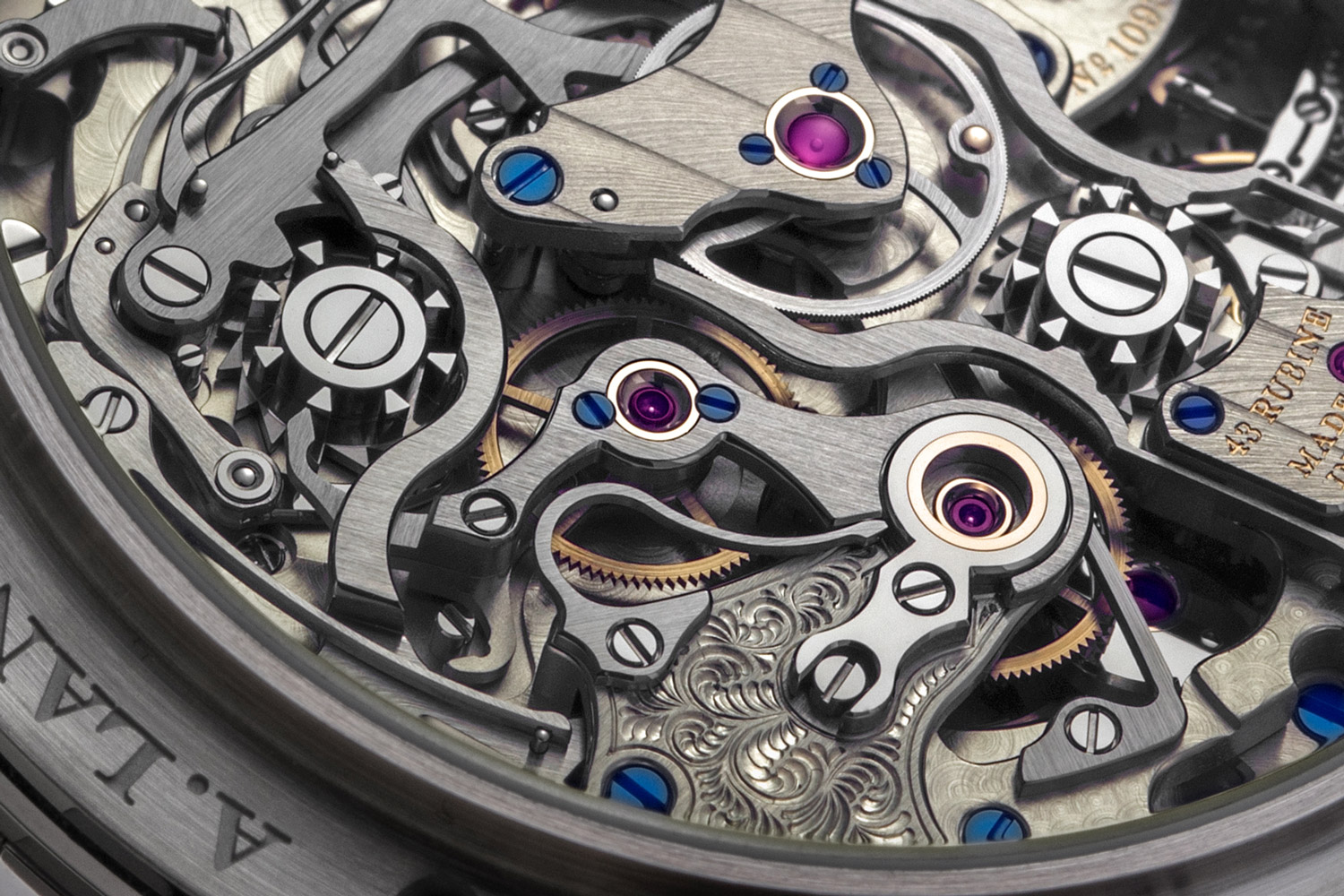
The classic balance cock engraved with a floral pattern
Concluding thoughts
While the watch could have pushed further with key features like a classical isolator, it does bring about new benefits to the watch collector, specifically, its slimness. Lange has already offered many technically impeccable watches, but few have offered such a fair balance of slimness and complexity as this timepiece does.
A. Lange & Söhne 1815 Rattrapante Perpetual Calendar
Ref. 421.056FE Specs and Price
Movement: L101.1; manual; 42 hours power reserve
Functions: Hour, minutes, seconds, split-seconds chronograph and perpetual calendar
Case: 41.9 mm x 14.7 mm; 18k white gold; water resistant to 30 m
Strap: Alligator leather strap with folding buckle
Availability: At boutiques and select retailers
Limited edition: 100 pieces
Price: USD 319,000










